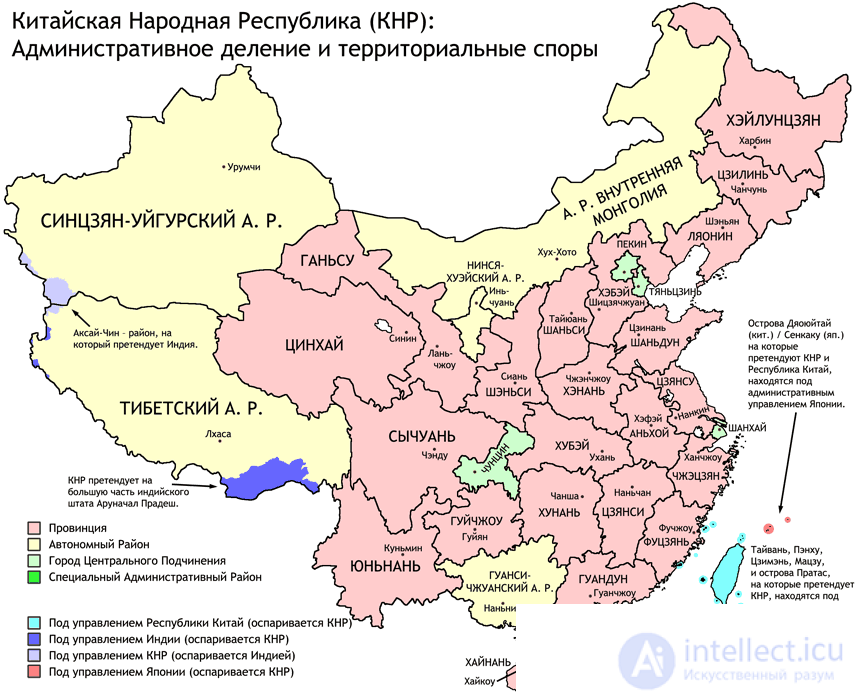Lecture
China faces a number of strategic adversaries in the context of international politics, security, economics, and technology. As China’s power and ambitions on the global stage grow, its relations with other countries and regions are becoming increasingly strained. Here are China’s key strategic adversaries:
1. The United States of America:
The United States is one of China’s main strategic adversaries on the international stage, especially in the context of global political, economic, and technological competition. China and the United States clash on a number of issues:
Trade War: Since 2018, China and the United States have been locked in a tense trade relationship, including tariffs and sanctions that have been imposed to curb China’s economic power.
Technological Competition: China and the United States are competing in high technology, including artificial intelligence, 5G, and cybersecurity. American sanctions against Chinese companies such as Huawei are a major part of this competition.
Geopolitical Standoff: The US actively curbs China in Asia, particularly in the South China Sea, Taiwan, and China’s Belt and Road Initiative.
Taiwan: The US supports Taiwan in its quest to maintain independence from China, which is one of the most contentious areas between the two countries.
2. India:
China and India have a long history of territorial disputes, particularly in the Himalayan region. In recent years, relations have been strained by border clashes and rising military tensions on the Ladakh front (where armed clashes occurred in 2020). China and India also compete for influence in South Asia and the Indian Ocean, adding to the geopolitical standoff between the two countries.
3. Japan:
Japan and China have long-standing disputes over territorial waters, particularly the Senkaku Islands (called Diaoyu by China), which are located in the East China Sea. There are also tensions over Chinese military activity in the region and the expansion of Chinese influence in the South China Sea. Japan is concerned about China’s growing military power and its role in regional security, especially in the context of China as a competitor in technology and economics.

4. Taiwan:
China considers Taiwan to be an integral part of its territory and actively opposes any international efforts to recognize Taiwan as an independent state. Tensions between China and Taiwan remain, especially in the context of China’s threat of military intervention if Taiwan declares independence or is recognized internationally. China has been active in the international arena to isolate Taiwan from other countries.
5. European Union (EU):
The European Union and China have an important economic relationship, but there are a number of strategic differences:
Human Rights: The EU has criticized China for its human rights abuses, particularly in Xinjiang, where it has persecuted Uighurs and other Muslim minorities. Hong Kong: The EU condemns China’s actions in Hong Kong, including the imposition of a National Security Law that curbs political freedoms.
Trade: The EU is also concerned about uneven trade and subsidies to Chinese companies, which undermines fair competition.
6. South China Sea (regional countries):
China lays claim to most of the South China Sea, causing conflicts with several neighboring countries, including Vietnam, the Philippines, Malaysia, and Brunei. These countries dispute China’s claims to territorial waters and resources in this strategically important region. China is actively building military bases on disputed islands, further exacerbating the conflict.
7. Russia:
While China and Russia are strategic partners in some areas (such as energy, security, and countering Western influence), they also have their differences. For example, there is competition for influence in Central Asia, as well as over economic and military dominance in eastern Eurasia. Russia is also concerned about China’s growing economic and political influence in countries that have traditionally been in Russia’s sphere of influence, such as Kazakhstan and other former Soviet republics.
8. Australia:
In recent years, relations between China and Australia have deteriorated significantly. Australia has supported the United States and other Western countries in containing China in the Pacific region, which has led to tensions between the two countries. Australia has also criticized China for its human rights record and its actions in the South China Sea. China, in turn, has waged an economic war by restricting Australian imports.
9. Global Anti-Democratic and Anti-Political Forces:
China actively opposes those countries and international forces that oppose authoritarian regimes and the Chinese model of governance. China has rejected criticism of its domestic policies related to Jinjiang, Tibet and Hong Kong, where
it seeks to suppress any form of political and cultural opposition.
Conclusion:
China's strategic adversaries include not only global powers such as the United States, India, and Japan, but also China's neighbors in Asia such as Taiwan, the South China Sea, and Australia, as well as international forces that support democracy and human rights. China actively competes with other countries in areas such as technology, economics, and geopolitics, which creates complex and multi-layered contradictions on the world stage.
Comments
To leave a comment
Theory of Strategic Art
Terms: Theory of Strategic Art